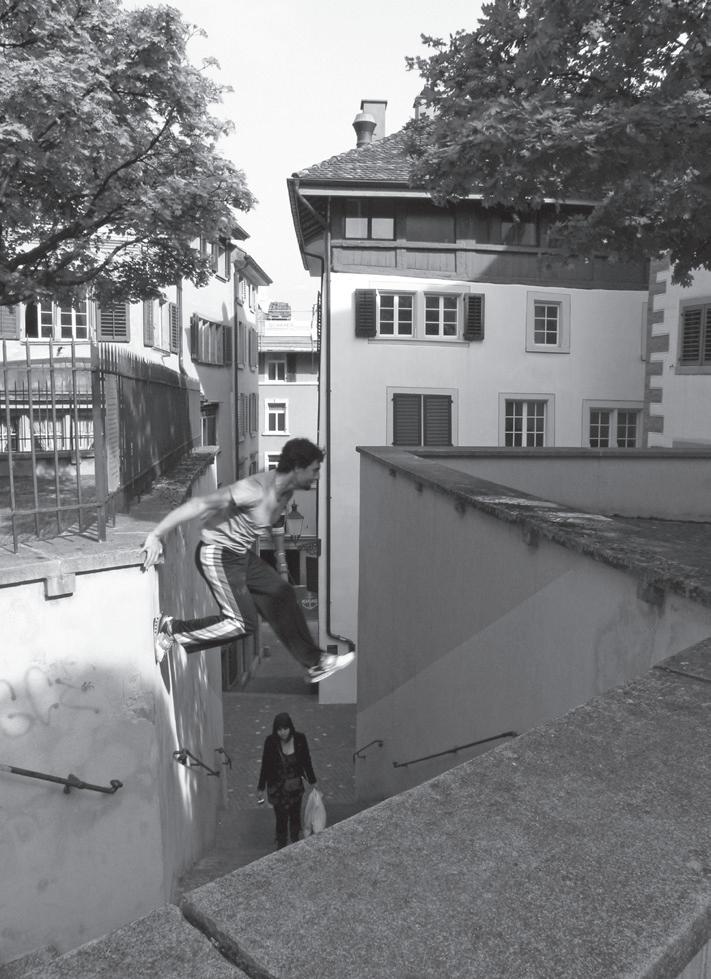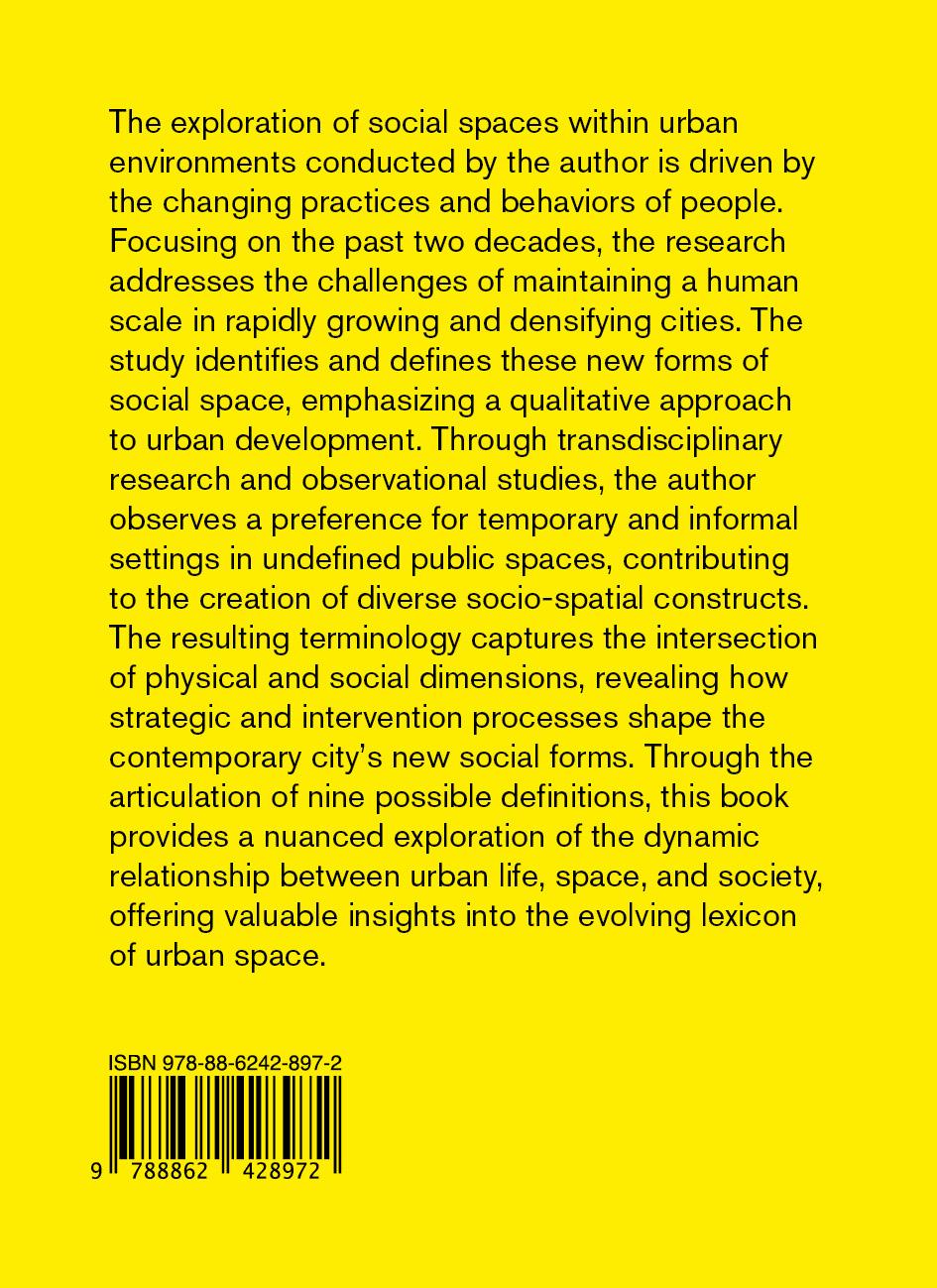
AUID series presents texts extracted from the final doctoral dissertations of the Doctoral Program in Architectural Urban Interior Design (AUID) at Politecnico di Milano, Department of Architecture and Urban Studies.
Editor
Michele Porcelluzzi
Graphic Design
Francesco Trovato
AUID Head
Alessandro Rocca
AUID Scientific Board
Fabrizia Berlingieri, Guya Bertelli, Marco Biraghi, Marco Borsotti, Marco Bovati, Luigi Cocchiarella, Emilia Corradi, Pierre Alain Croset, Valentina Dessì, Andrea Di Franco, Immacolata C. Forino, Roberto Gigliotti, Andrea Gritti, Stamatina Kousidi, Camillo Magni, Laura Montedoro, Valerio Paolo Mosco, Marco Navarra, Filippo Orsini, Orsina Simona Pierini, Matteo Poli, Gennaro Postiglione, Sara Protasoni, Alessandro Rocca, Alessandro Rogora, Pierluigi Salvadeo, Luigi Spinelli, Ilaria Valente

AUID series
These agile booklets document the research carried out within our doctoral program. We decided not to publish the entire doctoral works, which are extensive and articulated, but to, instead, select and extract, from those scientific concentrates of sophisticated knowledge, the most comprehensible studies that are obviously associated with themes of the current debate on architectural design. These texts have, therefore, been forcibly stripped of their premises, of the state of the art and apparatus overview. They have, at times, even been disconnected from the broader rationale they belonged to. Hence, it is an arbitrary and, sometimes, unjust process, if we consider the scientific coherence of the original constructs. However, dear reader, we assure you that it was done with the best of intentions, an effort aimed at building a small, solid and well-designed bridge between the elite world of academic research and the fluid, open and permeable to discussion, updates of the critical evolution of contemporary architectural design.
Alessandro Rocca
Contents
Salvadeo Social space as the object of investigation Reading the city through the practices of people A possible start of a lexicon Notes Bibliography 9 11 19 43 76 84
Foreword Pierluigi
Foreword
Pierluigi Salvadeo
Today’s world is amid a material and immaterial exchange process, one of discussion and synergic use of abilities. This begs the question of what role design can play and what procedures would a designer put in place to answer the relationships between people and the urban space. Basically, the quality of a space is no longer entrusted to its architectural characteristics, but to a more complex system of relationships, between subjects, objects, and actions. The theory herein proposed is that the contemporary city is nothing but the superimposition of “texts” of varying nature which, when necessary, take us well beyond the realm of architecture. This is a composite reality where all pieces are placed on a single plan that cancels out time and space, like a vast plankton of different styles and shapes, customs, places, environments, enclaves, technologies, services, information, languages, images scenes, spatial control, brands, publicity, economy. Space is eroded by new territories which are heterogenous, transversal, multidisciplinary, spread-out, introverted, and at times immaterial, corresponding to specialised uses, perceptive frameworks, information networks, artificial climates, commercial information, communication systems; these are all dimensions contained within architecture, yet hard to describe using architectural codes. Madalina Ghibusi’s research identifies and defines new forms of social space, to update and enrich the design lexicon of urban space.
9
|
Pierluigi Salvadeo
Foreword
Social space as the object of investigation
We now know that the human being is to a certain extent affected by outer influences coming from the environment (be it social, cultural, physical or natural), and despite the dynamism of the latter, there are some human needs that have always been identified as prevailing throughout history. Therefore, the basics of this theoretical assessment start from the studies on the individual, and therefore it is necessary to first lay out the main processes by which individuals find themselves in relation to the environment around them. The following lines are meant to support the choice of making the social space the main subject of this study.
Social space has been the focus of the French sociologist, anthropologist, and philosopher Pierre Bourdieu, who throughout his career delineated a theory of social space according to which social space is translated into physical space: “social space tends to be translated, with more or less distortion, into physical space, in the form of a certain arrangement of agents and properties.”1
Firstly, it is necessary to justify why this study does not refer simply to public space, which is the closest and most accessible notion for understanding the spatial factor in this urban study. The reason is that to some extent, they share common characteristics, but the notion of social space both adds to and simplifies the specific focus of this thesis as it refers to: “those spaces that we use as groups and that involve collective – be they communal, cooperative or conflictive – activities,
11
Social space as the object of investigation
Ghibusi | Opening a Lexicon of the New
Spaces exchanges and practices.”2 Referring to the same spaces, Hertzberger offers an additional analogy to be able to identify them in the architectural world, as “they can be regarded as ‘arch-forms’ of collective exterior space with the best possible conditions for social life.”3 It can be further argued that, in the context of this speech, where a range of concepts are debated, it is still more suitable to refer to social space, in order to eradicate some of the potential confusions and conflicts, while also avoiding “the baggage of the concepts public/ private. Yet, we can still describe the qualities that we would or want to associate with these concepts.”4 The fact that this public/private duo is not necessary when talking about social spaces, or the spaces that embed social potential, is also supported when looking at the flow of the urban spaces:
“The fact is, public and private, whether inside or outside, are relative concepts. Only the containment of buildings vis-a-vis the openness of the street presents a barrier in the continuity of this system of successive transitions.”5
And this is not a new perspective as Mark Dudek6 shows a case of place making through the example of a portion of a 1748 map of Rome by Gianbattista Nolli where the white empty areas represent the public space, with no distinction between indoor and outdoor ones. Although the author analyzes this from the point of view of the “traditional” definition and meaning of public space, it is still worth noting that
12
Madalina
Social
the architectural enclosures have never translated into limitations to social life and its manifestations.
Marita Rampazi7 also highlighted the blurred limits between public and private in the contemporary places and went even further by showing how places today work more according to a “polyfunctional” logic where the same places host both public and private behaviors. In 1989 Ray Oldenburg classified these places as Third Places,8 i.e., places related to a first place being the home and a second place being the workplace. Therefore, what is left in-between these two is the informal instance of third places, which are essentially as important as the first two in the life of both the individual and the community. Examples of such places range from commercial settings such as cafes and shops to other settings focused on leisure and self-care. However, what is relevant for this study is their being in between public and private, in the sense of that they are not focused on assuming either of these two ownership states in their definition. In respect to this, third places rather highlight their contribution to the healthy development of the society in its defining characteristics.
Added to these arguments, social space is also more applicable for the current research work as “it presumes little about the ontological status of the space and carries little or no ideological baggage.”9 Nonetheless, in their broad but comprehensive work of defining public space, Carr et al. stated that the first predominant cultural force that shapes public life is
13
Social space as the object of investigation
a social one, whereas the second one, the functional form, is “serving the basic needs of a society” and the third kind, the symbolic public life, “develops out of the shared meanings people have for physical settings and rituals that occur in public.”10
However, while the construct of “social space” incorporates the subject of this research work to a more detailed level, studies focusing on public space in its “commonly accepted” definition are to be considered and not disregarded, because they are still relevant, even if only partially. Choosing not to disregard them poses no risk into limiting this research work, as long as this input of case-studies and theories which primarily focus on public space or on the individual, will be filtered and critically analyzed according to the characteristics that define social space.
A second argument for choosing social space as a key construct, is that it is also more applicable and resourceful when used as a tool of research.
“In reality, social space ‘incorporates’ social actions, the actions of subject both individual and collective. (...) From the point of view of knowing (connaissance), social space works (along with its concept) as a tool for the analysis of society.”11
In fact, in a deeper focus on this aspect, it is the way social space is formed in the body of scientific knowledge that comes in line with the pillars that support the entire discourse of this research work from beginning to end. These are closely related to the basic concepts
14
New Social Spaces
Madalina
Ghibusi | Opening a Lexicon of the
of social space: assemblages, networks, activities, and subjects that are also delineated throughout this study, to some extent, according to several arguments. These defining concepts have been formulated according to their recent development in a range of fields focusing on social theory, and have been further transformed into a research framework in a study of social space on three case-studies in Chile. It is worth noting a specific conclusion of this study, as “[i]t reveals how individual subjects whose everyday activities unfold in what is nominally the same city nevertheless inhabit strikingly different social spaces.”12
This study is based on empirical evidence and supports Lefebvre’s theory, in that social space offers additional information about the individual while connecting him/her to an external system that is not completely defining for the individual but in which the components of social space are continuously determining each other.
“It is not the work of a moment for a society to generate (produce) an appropriated social space in which it can achieve a form by means of self-presentation and selfrepresentation - a social space to which that society is not identical.”13
The focus on social space (or “relational space” as referred to in philosophy) has been increased with the advancement of human geography and some other social sciences which added to the limited and ambiguous notion of space, thus developing
Social space as the object of investigation
15
Parkour in the Altstadt, the historical centre of Zurich.






